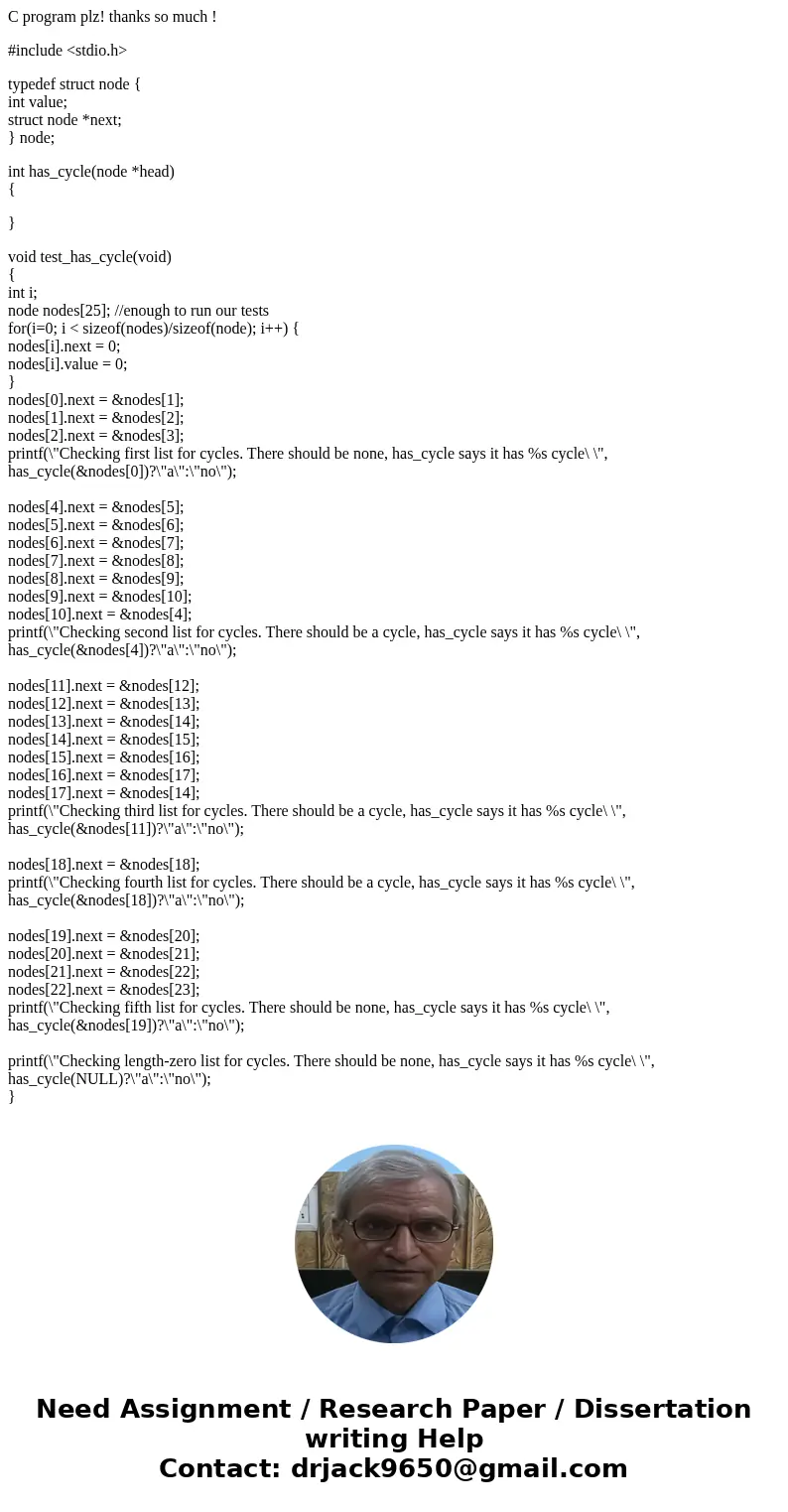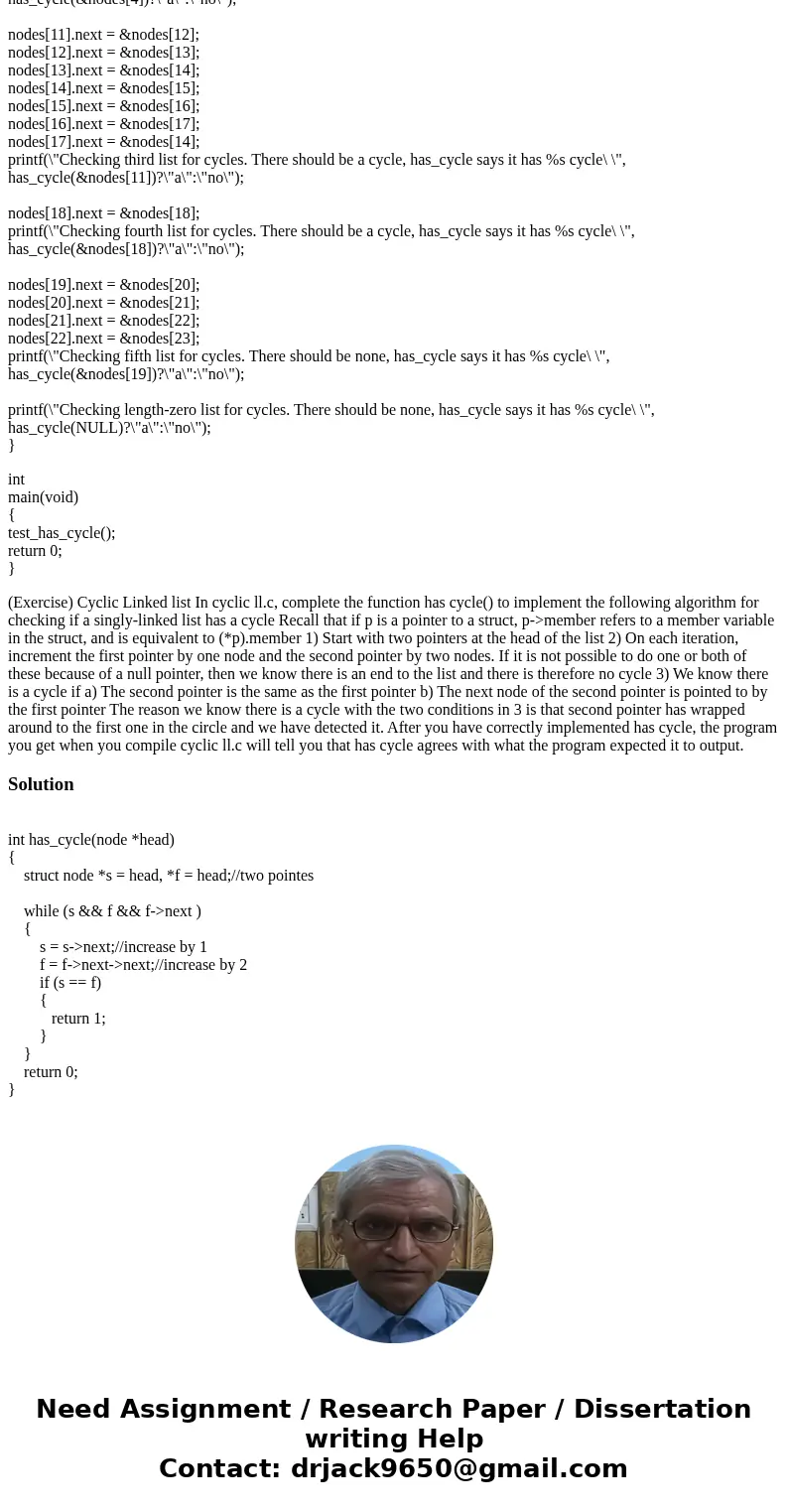C program plz thanks so much include typedef struct node i
C program plz! thanks so much !
#include <stdio.h>
typedef struct node {
int value;
struct node *next;
} node;
int has_cycle(node *head)
{
}
void test_has_cycle(void)
{
int i;
node nodes[25]; //enough to run our tests
for(i=0; i < sizeof(nodes)/sizeof(node); i++) {
nodes[i].next = 0;
nodes[i].value = 0;
}
nodes[0].next = &nodes[1];
nodes[1].next = &nodes[2];
nodes[2].next = &nodes[3];
printf(\"Checking first list for cycles. There should be none, has_cycle says it has %s cycle\ \",
has_cycle(&nodes[0])?\"a\":\"no\");
nodes[4].next = &nodes[5];
nodes[5].next = &nodes[6];
nodes[6].next = &nodes[7];
nodes[7].next = &nodes[8];
nodes[8].next = &nodes[9];
nodes[9].next = &nodes[10];
nodes[10].next = &nodes[4];
printf(\"Checking second list for cycles. There should be a cycle, has_cycle says it has %s cycle\ \",
has_cycle(&nodes[4])?\"a\":\"no\");
nodes[11].next = &nodes[12];
nodes[12].next = &nodes[13];
nodes[13].next = &nodes[14];
nodes[14].next = &nodes[15];
nodes[15].next = &nodes[16];
nodes[16].next = &nodes[17];
nodes[17].next = &nodes[14];
printf(\"Checking third list for cycles. There should be a cycle, has_cycle says it has %s cycle\ \",
has_cycle(&nodes[11])?\"a\":\"no\");
nodes[18].next = &nodes[18];
printf(\"Checking fourth list for cycles. There should be a cycle, has_cycle says it has %s cycle\ \",
has_cycle(&nodes[18])?\"a\":\"no\");
nodes[19].next = &nodes[20];
nodes[20].next = &nodes[21];
nodes[21].next = &nodes[22];
nodes[22].next = &nodes[23];
printf(\"Checking fifth list for cycles. There should be none, has_cycle says it has %s cycle\ \",
has_cycle(&nodes[19])?\"a\":\"no\");
printf(\"Checking length-zero list for cycles. There should be none, has_cycle says it has %s cycle\ \",
has_cycle(NULL)?\"a\":\"no\");
}
int
main(void)
{
test_has_cycle();
return 0;
}
Solution
int has_cycle(node *head)
{
struct node *s = head, *f = head;//two pointes
while (s && f && f->next )
{
s = s->next;//increase by 1
f = f->next->next;//increase by 2
if (s == f)
{
return 1;
}
}
return 0;
}


 Homework Sourse
Homework Sourse